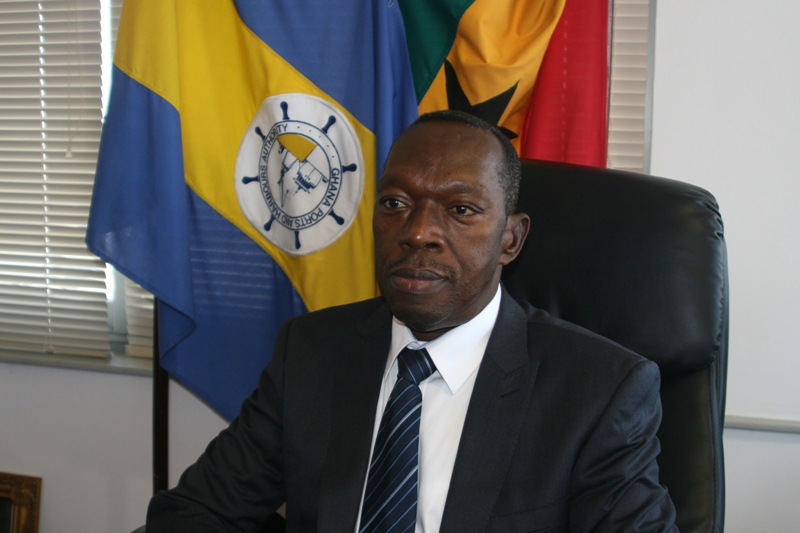Director General of Ghana Ports and Harbours Authority (GPHA), Richard Anamoo, said container traffic to the Tema Port dropped significantly from almost one million in 2013 and 2014 to about 800,000 20-footer equivalent units (TEUs) in 2015.
The situation, he said, also affected frozen imports which witnessed a significant drop.
“We, however, expect the sector to bounce back once the economy recovers from the power challenges,” Anamoo said in an interview with the Daily Graphic in Tema last Saturday.
He indicated that the new refrigerated (reefer) terminal, with a capacity to accommodate 800 20-footer equivalent unit (TEU) plugging points which became operational in December 2015, was already looking congested.
As such, the authority, he said, would relocate the container devanning (unstuffing) yard, the Golden Jubilee Terminal (GJT), from its present location along the Harbour-Tema Community three stretch to Kpone in the Kpone-Katamanso District in the Greater Accra Region.
The new GJT project, according to Anamoo, which would also commence alongside the Tema Port expansion project expected to take off at the end of July 2016, would be financed with a $135 million credit facility from the Canadian Commercial Cooperation (CCC).
He said the GPHA and its partners, Meridian Port Services (MPS), had already floated tenders for the main construction works to expand the Tema port into an 18-vessel berthing facility with a capacity to hold some 3.5 million 20-footer equivalent units (TEUs) of containers.
Already, the project consultants, Anamoo said, were feverishly preparing the evaluation report on the tender processes to enable the physical construction to begin on the $1.5 billion project.
He said GPHA had so far invested a total of $357 million into the Takoradi port expansion project.
Work on the dredgers, he said, was progressing steadily with portions of the sewer side of the breakwater being properly protected to be able to hold bigger vessels.
“We would also have to adapt the state-of-the-art technology to make the individual business transaction as seamless as possible using IT so that there would be very little paperwork required,” Anamoo said.
That, he said, would ensure reduction in time and processes and enhanced service rendered to clients which would further eliminate fraudulent activities by some port users.
“The net result is that we want to reduce the cost of doing business at the port to the barest minimum,” he stated.
He emphasised that the port ought to be working towards maximising profits efficiently through an increase in volumes of cargo handling rather than the mere high cost of port tariff.
“It is our ambition for the Ghana corridor to be a trade route for and within West Africa,” Anamoo emphasised.
Asked whether the port management was not borrowing excessively for its turnkey projects, Anamoo indicated that changing patterns in maritime trade with the deployment of information technology had seen significant change in port and terminal operations.
“Shipping lines are merging to adapt to new modes of trade, and with bulk cargo being containerised, soon minerals such as manganese, gold and bauxite would be exported in containers. So it is either you change your port to conform to international standards or risk losing traffic,” Anamoo stressed.
Copyright Ships & Ports Ltd. Permission to use quotations from this article is granted subject to appropriate credit given to www.shipsandports.com.ng as the source.

